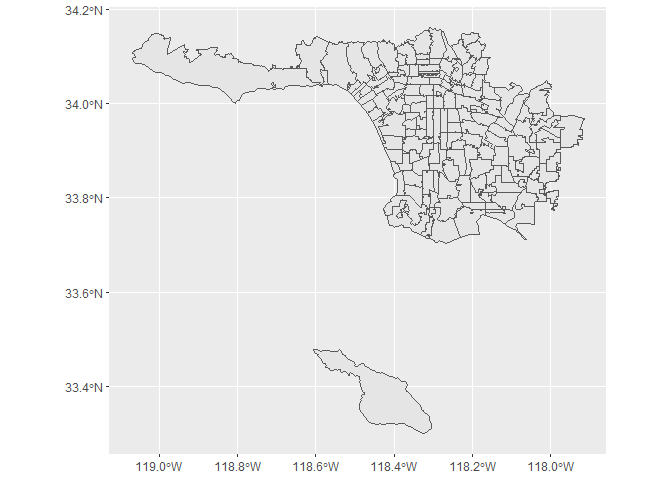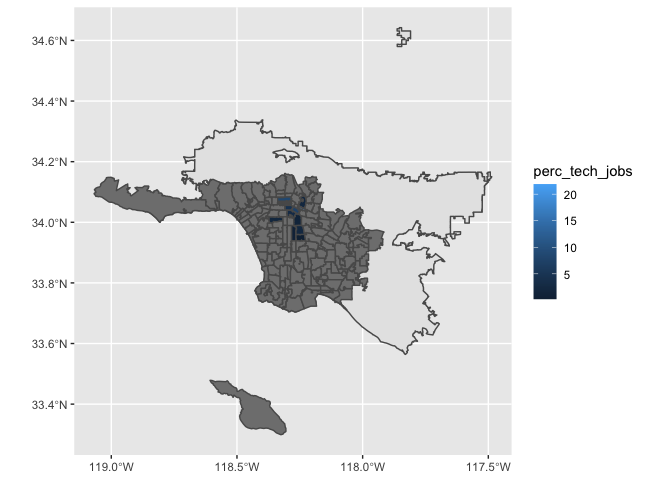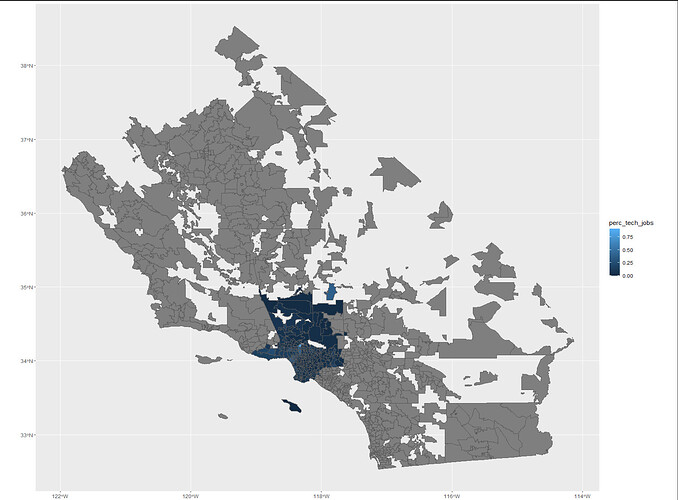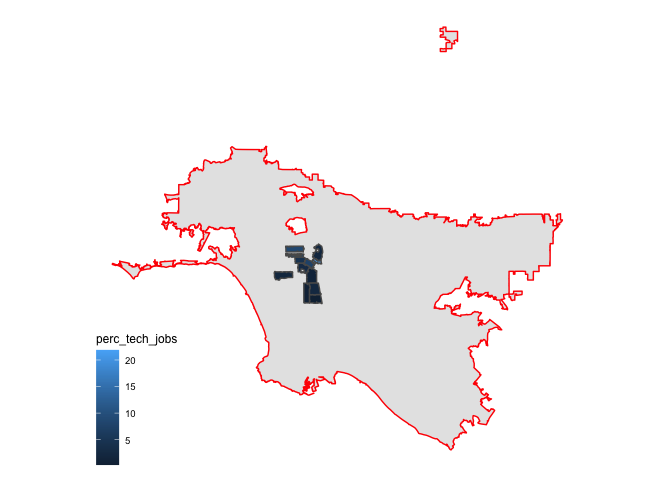Hi,
I am trying to create a Heatmap of perc_tech_jobs for different zipcodes, which I believe are from the Los Angeles area. I couldn't find this kind of map based off zipcodes and the closest I was able to find was from this source: zcta
I read about zctas and for what I understood if I provide the first two digits of the zipcode the zctas() function would return the polygons for the respective codes. I am unfamiliar with plotting maps and I kind of got the parts I want to some extent but I'm not quite sure how to tie everything together.
I believe that I need to overlay the two maps, remove all these coordinates and then have a color gradient, possibly interactive map where I get the fill gradient and the choice to hover the mouse over the map to see what the actual value is.
library(tidyverse)
library(sf)
#> Linking to GEOS 3.9.1, GDAL 3.2.1, PROJ 7.2.1
library(tigris)
#> To enable
#> caching of data, set `options(tigris_use_cache = TRUE)` in your R script or .Rprofile.
# Sample df
plot_ready <- tibble(
zip_code = seq(90001,90015,1),
tot_employment = c(8538,3175,7066,9795,5932,8799,13410,4823,8,25845,8423,145589,16171,11389,25922),
tot_tech = c(192,8,43,824,520,384,386,90,0,5449,92,2843,3536,2041,1923),
perc_tech_jobs = c("2.25%","0.25%","0.61%","8.41%","8.77%","4.36%","2.88%","1.87%","0.00%" ,"21.08%","1.09%","1.95%",
"21.87%","17.92%","7.42%")
)
# zcta is based on the first 2 zipcode digits
zip_to_zcta <- plot_ready$zip_code %/% 1000
# polygons from zctas
poly_zctas <- zctas(cb = TRUE, starts_with = zip_to_zcta)
#> ZCTAs can take several minutes to download. To cache the data and avoid re-downloading in future R sessions, set `options(tigris_use_cache = TRUE)`
# Specifying LA urban areas.
uas <- urban_areas() %>% filter(str_detect(NAME10,"Los Angeles"))
# plotting desired zipcodes
ggplot(poly_zctas, fill = plot_ready$perc_tech_jobs) +
geom_sf()

# Missing parts of the map?
ggplot(uas) +
geom_sf()

Created on 2021-09-29 by the reprex package (v2.0.1)
I'm uncertain on how to handle these polygons to give me the map I'm trying to achieve. Not sure as well if the sf() package is the one that should handle the fill for the heatmap and how to go about it.
I believe using leaflet() could also be another option, not sure if it would make plotting process any easier.
Thank you for your input and time.


